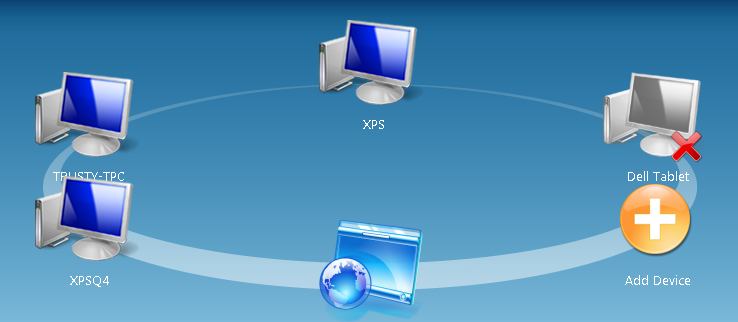Over the summer I reviewed everything I use technology to do in a typical day. More of these tasks are going online. This blog for instance is completely online. I upload pictures to Flickr and embed them with text into a web-based editor in WordPress.
I also switched all my email to Gmail. Before, all my computers had to have a copy of Eudora and it was a bit of a hassle to keep them all synchronized. Eudora is gone giving me one less program on my computers. Basically I need Office and a simple graphics editor and I can do almost everything online.
I use four different computers on a regular basis. I have a main computer at home and another one at the office. I also have a laptop and a tablet. Below is what my Mesh looks like. I’m typing this on my laptop and my tablet is in my backpack, so it is offline.

Each computer has Microsoft Office. Other than that I use Picasa, IrfanView and Paint Shop Pro. A couple of the computers have specialty software for specific tasks. For example, my home desktop has video editing software that the others do not.
Out on the Mesh I have a folder for each course I teach and an extra folder called Presentations. I can create a PowerPoint presentation on my home desktop and save it in the Mesh folder. When I get the office, that PPT is on my computer there. When I take my laptop to class, the file is there too. I can use any computer to make a change, and the updated local file is synchronized to every computer on my Mesh. Read that last sentence again. That is incredible.
In a pinch, I can even use someone else’s computer and login to my Mesh via a browser where I can grab any of my up-to-date files.
There is also has a major new feature added since I last talked about Mesh. Now a local folder can by synchronized to the Mesh without consuming the online storage. Microsoft provides five gigabytes of online storage with a free Mesh account. That’s enough for all your documents and a few multimedia files. It’s not enough for all my photos. With the new feature I can set the Mesh to sync my pictures to all the computers in my Mesh, but skip the online desktop. In this way, only my class and presentation files cut into my five gigs of online storage, but I still have all 25 gigs of my pictures on all my computers. The Mesh is essentially a P2P synchronization system that keeps all my files up to date.
Keep in mind that synchronizing is not the same as backing up. If I delete a file from my Mesh, it gets deleted from every computer on my Mesh. I can always go to my daily backup and recover the file, but I might not need to do that. The Mesh does not treat files like those on a network. If I go across my network and delete a file from my file server, that file does not go into my network server’s trash. The file is gone. The Mesh actually puts the deleted file into the trash on each computer in the Mesh. So if I delete a file, I have four chances (one on each computer in my Mesh) to pull the file out of the trash.
If you have not signed up for a Mesh account, you no longer need an invitation. Microsoft has opened the beta to everyone. If you regularly use more than one computer, setup an account today. Of all the technologies I have used in the last year, the Mesh more than any other has fundamentally changed the way I work.

1 Response to More on Mesh